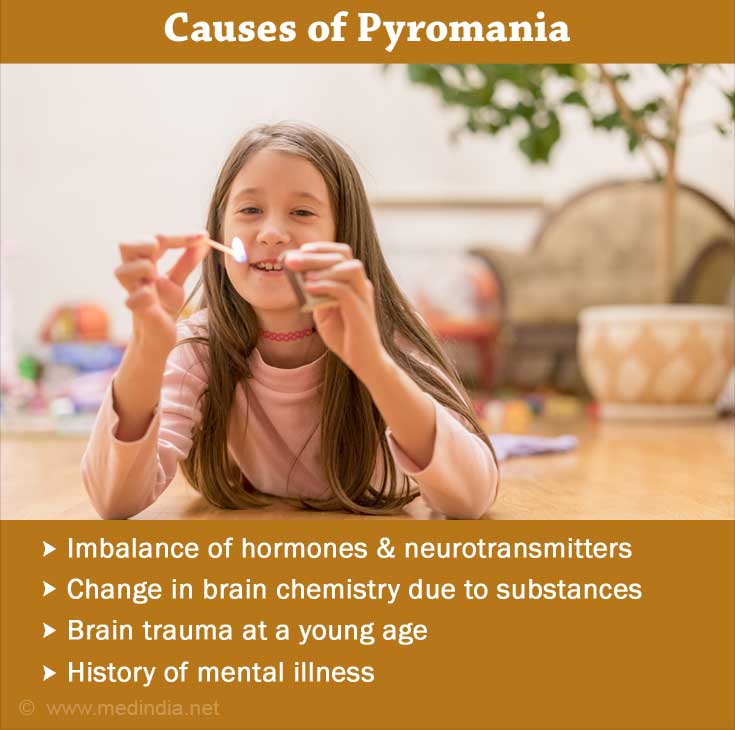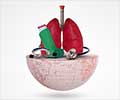- Fire Setting and the Impulse-Control Disorder of Pyromania - (https://psychiatryonline.org/doi/10.1176/appi.ajp-rj.2016.110707)
- Pyromania - (https://www.gulfbend.org/poc/view_doc.php?type=doc&id=576&)
- Firesetting, Arson, Pyromania, and the Forensic Mental Health Expert - (http://jaapl.org/content/40/3/355)
- What is pyromania? - (https://hhma.org/healthadvisor/aha-pyromani-bha/)
- Behavior Modification Techniques - An Awareness Study - (https://files.eric.ed.gov/fulltext/EJ1245283.pdf)
- How to stop body-focused repetitive behaviors - (https://www.anxiety.org/learn-how-to-break-bad-habits-with-habit-reversal-training)
- Impulse Control Disorders - (https://www.tamuct.edu/research/databases/disorders/impulse-control-disorders.html)
What is Pyromania?
Pyromania is an impulse control disorder that involves engaging in setting fires, the tension before the act, pleasure after the act, and interest in fire-related paraphernalia. This behavior is solely motivated by the above factors and is not done to cover a crime, for revenge, for earning money, or in a state of inebriation.
The prevalence of pyromania has been found to be around 1% and is typically found among males. Two-thirds of the cases in one study of fire setters were in men. Individuals with pyromania are more likely to have an intelligence level below the normal range. They generally develop psychiatric disorder at the age of 18 years. Around 62% of the individuals also face an additional mood disorder.
Pyromania differs from arson. Arsonists may have pyromania, but the research suggests that most don’t have it. Arson is considered a crime as it is done for vengeance or monetary gain, whereas fire setting in pyromania is compulsive and maladaptive.
What are the Causes of Pyromania?
The causes of pyromania still need further research. Due to few cases and the difficulty in identifying cases, it is tough to conduct research to understand the causal factors.
Common factors that may play a role in the development of the disorder include:

- Genes inherited from family members
- Imbalance of hormones and neurotransmitters
- Change in brain chemistry due to substances
- Child abuse and maltreatment
- Brain trauma at a young age
- Lack of social skills
- History of mental illness
- Presence of other comorbid conditions such as substance use disorder, impulse control disorders, depression, anxiety, learning disabilities, and ADHD
- Severe stressful events leading to a pathological response
Fire setting may also have other causes such as attention seeking, sensation seeking tendencies, antisocial traits, lack of knowledge and skills with respect to fire safety, poor supervision, negative role models, and peer pressure.
What are the Symptoms & Signs of Pyromania?
The symptoms of pyromania include multiple incidents of fire setting that are done on purpose. There is a presence of arousal or tension before the act of lighting things up. The process of setting fire and witnessing the consequences leads to a sense of satisfaction, gratification, or pleasure, and sometimes even relief.
The individual inflicted with this condition tends to have an intense curiosity, intrigue and interest in fire related paraphernalia and situations, and their outcomes. For example, they may want to work at the fire station or set off fire alarms without cause.
The aim of setting fires is not to seek revenge, gain money or hide a crime. The individual is not acting in response to hallucinations or delusions. Their judgment is not affected due to other mental disorders. Finally, the condition doesn’t meet the criteria of another disorder more accurately. These include conduct disorder, antisocial personality disorder and mania.
How do you Diagnose Pyromania?
The diagnosis of pyromania in children needs to be assessed carefully. Those thought to be child pyromaniacs may have conduct disorder or curiosity-related fire setting. It is crucial to consider the intent behind the behavior.
To diagnose the condition, a clinical psychologist or psychiatrist will investigate the symptoms, family history, medical reports and any medication the individual is taking. It is ensured that the presence of any other medical issue or substance abuse is not at the root of the problem.
Criminal files indicating fire setting that is repeated are also valuable in the diagnostic process. The individual’s personal account related to their perception and attitude towards fear is required. The Diagnostic and Statistical Manual of Mental Disorders, 5th Edition can be used in the process of diagnosis.
How can you Treat Pyromania?
Pyromania can be treated following a multidisciplinary approach. The treatment methods include:

- Individualized treatment plan- Treatment needs to be individualized according to the history and symptoms of the client. In the case of children, the presence of stressful factors, supervision of the child and parenting style need to be looked into. The treatment is crafted to meet the individual needs and personality of the child, with a focus on communication and healthy expression of anger. Early intervention is crucial as it is effective in 95% of children.
- Behavior modificationis used in the treatment of pyromania. This involves decreasing maladaptive behaviors and increasing adaptive behaviors. Reinforcement and punishment are used for this purpose.
- Cognitive Behavioral Therapy (CBT) can be applied to work on modifying irrational thoughts and beliefs that may be underlying the behavior.
- Habit Reversal Training or Therapy- This focuses on creating awareness of urges, triggers such as situations or places, increasing tolerance, reducing triggers, and replacing the maladaptive behaviour.
- Group Therapy - 12 step programmes that are used with individuals facing addiction can also be effective in treating pyromania.
- Interpersonal Psychotherapy - This can be used to look into the emotional issues underlying the urges and behavior, and work on processing these issues.
- Pharmacotherapy - Medications include mood stabilizers, antidepressants, and antipsychotics. Antidepressants such as tricyclic antidepressants, monoamine oxidase inhibitors (MAOIs) and selective serotonin reuptake inhibitors (SSRIs) are prescribed.
- Biofeedback can be used to help the individual become more aware of normal body functions such as the rate of breathing. The person is then taught how to control these functions such that in a triggering situation, they can relax and reduce the tension.
How to Prevent Pyromania?
Prevention focuses on teaching children self-control as a skill, imparting fire-safety education and improved assessment at younger ages. High risk children can be monitored for symptoms of pyromania or other mental health conditions. In addition to this, adult supervision of young children is crucial.
As early intervention in childhood has found to be beneficial for 95% of children, it is important that any deviant behavior is addressed with a mental health professional in the initial stages.








